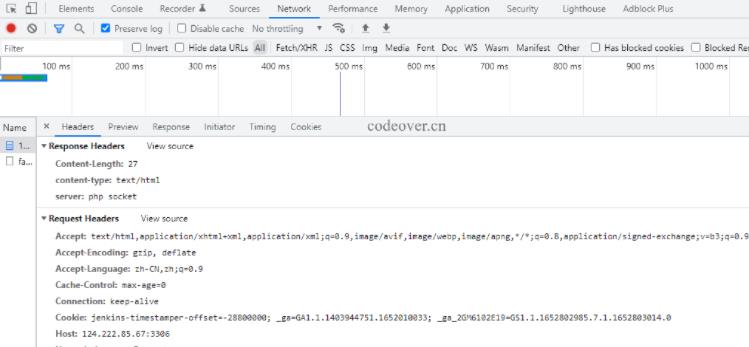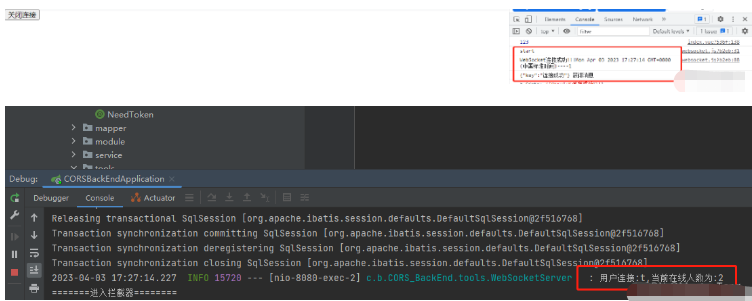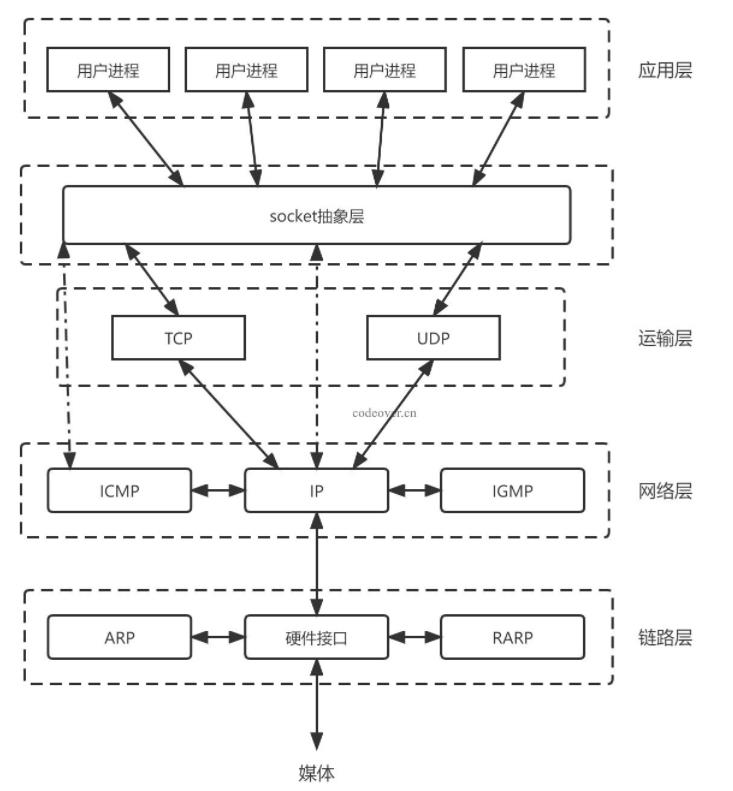 Backend Development
Backend Development PHP Tutorial
PHP Tutorial Sending emails using Socket - a continuation of a good article turned into power online_PHP tutorial
Sending emails using Socket - a continuation of a good article turned into power online_PHP tutorial
Sending emails using Socket - continuation Author: limodou I have written an article before, introducing how to use socket programming to send emails to solve the problem that the web server does not support the mail() function. It works after my test. However, many free email providers (starting from 263, 163, and Sina soon) have added authentication functions to the SMTP function, making the original email sending class unusable. After studying the corresponding SMTP follow-up RFC and many experiments, I finally succeeded. So I introduce it to everyone with urgency. Introduction to SMTP authentication function I don’t want to introduce the SMTP authentication function to you in detail here, because I can’t explain it clearly. For details, please refer to the [RFC 2554] specification. The authentication function of SMTP mainly adds the AUTH command. The AUTH command has many uses, and there are many authentication mechanisms. The authentication mechanisms supported by AUTH mainly include LOGIN, CRAM-MD5[Note 1], etc. LOGIN should be supported by most free email servers, including 263 and Sina. Sina also supports the CRAM-MD5 mechanism. The authentication mechanism is generally only performed before the email is actually sent, and it only needs to be performed once. When the authentication is successful, the email can be sent as usual. The principle is Challenge-Response, that is, the server sends a command to ask the client to answer, and the client responds based on the information sent by the server. If the response is passed, the authentication is successful and the process can continue. Here is a brief introduction to these two productions. S: means returned by the server, C: means sent by the client. LOGIN It should be simpler. The password-response process is as follows: 1 C: AUTH LOGIN 2 S: 334 dXNlcm5hbWU6 3 C: dXNlcm5hbWU6 4 S: 334 cGFzc3dvcmQ6 5 C: cGFzc3dvcmQ6 6 S: 235 Authentication successful. 1 Send authentication instructions to the server for the client. 2 The server returns a base64 encoded string, and the success code is 334. The encoded string is decoded to "username:", indicating that the client is required to send the username. 3 The client sends the base64-encoded username, here "username:". 4 The server returns a base64 encoded string, and the success code is 334. The encoded string is decoded to "password:", indicating that the client is required to send the user password. 5 The client sends a base64-encoded password, here "password:". 6 After success, the server return code is 235, indicating that the authentication is successful and emails can be sent. For LOGIN authentication, the user name and password are actually encoded in base64 and issued separately according to the server's requirements. (In my opinion, since base64 is a public encoding standard, it does not provide much protection.) CRAM-MD5 mechanism For the mechanism of CRAM-MD5, please refer to the [RFC 2195] specification, which will not be explained in detail here. . Mainly through the password-response mechanism, the server sends an information string, which consists of a random number, a timestamp, and a server address, and is encoded in base64. After receiving it, the client sends a string consisting of the user name, a space, and a digest, and encodes it in base64. The summary is obtained through the MD5 algorithm. This mechanism requires that the server and client have the same encryption string. After the client sends the digest, the server verifies its validity and returns 235 after success. How do I know what authentication my mail server supports? In SMTP [RFC 821], after successfully connecting to the mail server, the first command is usually "HELO".But in a mail server that supports authentication, the first command should be changed to "EHLO" [Note 2]. After the command is successful, the return of 263 may be: EHLO hello 250-smtp.263.net [Note 3] 250-PIPELINING 250-SIZE 10240000 250-ETRN 250-AUTH LOGIN 250 8BITMIME It can be seen that 263 supports LOGIN authentication. Of course, if you already know what the mail server is, there is no need to automatically judge it, but if you don't know, you need to analyze the return result. However, most mail servers support the simplest LOGIN method. Okay, let’s start modifying the sendmail.class.php3 we wrote before. It doesn’t matter if you don’t. The package file of sendmail.class.php3 is provided at the end of this article and can be downloaded. As for the examples, I wrote them myself based on this article. Modify sendmail.class.php3 Here only the key points of the modification are stated, rather than a comprehensive analysis. First, let’s review the idea of sendmail.class.php3 so that everyone can have an idea first. There are four functions in sendmail.class.php3, which are: The constructor of the send_mail class is used to initialize information. The send mail sending function executes the socket command and sends the mail. The do_command command execution function executes an smtp command and returns the processing. Result show_debug Display debugging information function First, the user should call the constructor of the class to initialize the necessary parameters. Such as SMTP server address ($smtp), welcome message ($welcome), and whether to display debugging information ($debug). At the same time, some internal variables must be initialized, such as the last executed command ($lalast), the last response message ($lastmessage), and the port number ($port=25). Then, the user generates email information and calls the send() function to send the email. In the send() function, according to the SMTP specification, one command is executed one after another (see the previous article for details). When executing a command, this is achieved by calling do_command(). If there is an error in the execution of do_command(), the program returns immediately, otherwise it continues to execute downwards. If the display debugging information flag is set, do_command() will return debugging information when the command is sent and the information is responded. Okay, everyone now has an understanding of its operation. Here is how to modify it. Modify the constructor (send_mail) Since the previous send_mail class does not support the authentication function, the authentication information must be added first. Three parameters have been added, $auth, $authuser, and $authpasswd. $auth is a flag indicating whether to use the authentication function. $authuser and $authpasswd are the username and password for SMTP authentication. According to the requirements of the corresponding mail service provider, for example, 263 is consistent with pop3. The same should be true for most. In this way, three internal variables need to be added after the internal variable table of the class: $auth, $user, $passwd. Modify the sending function (send) and change the sending command HELO to sending EHLO. At the same time, it is necessary to determine whether authentication processing is required: //Change to support ESMTP EHLO command if($this->auth) { $this->lastact="EHLO "; } else $this->lastact="HELO "; That is , if authentication processing is required, the EHLO command is sent, otherwise the HELO command is also sent. Then, add authentication processing: //2000.02.28 Add authentication processing if($this->auth) { $this->lastat="AUTH LOGIN" . " "; if(!$this->do_command($this->lafact, "334")) { fclose($this->fp); return false; } //Return the user name, encoded in base64 $this-> lastact=base64_encode($this->user) . " "; if(!$this->do_command($this->lastat, "334")) { fclose($this->fp); return false; } //Return the password, encoded in base64 $this->lastat =base64_encode($this->passwd) . " "; if(!$this->do_command($this->lafact, "235")) { fclose($this->fp); return false; } } Note that only the AUTH LOGIN mechanism, CRAM-MD5, is implemented here Not implemented. And there is no judgment on the information returned by the server. The default is to ask for the user name for the first time and the password for the second time. Modify the command execution function (do_command). The original function cannot display the situation when the response string is multiple lines. : /* Modified on 2000.02.28, the returned information will be displayed completely $this->lastmessage = fgets ( $this->fp, 512 ); $this->show_debug($this->lastmessage, "in"); */ while (true) { $this->lastmessage = fgets ( $this->fp, 512 ); $this->show_debug($this->lastmessage, "in"); if(($this->lastmessage[3]= = ) or (empty($this->lastmessage))) break; } In this way, the class has been changed. Test the send_mail class. Below is a small test program I wrote for sending a letter, but for safety reasons, I Do not use real information for the username and password. If you want to test, please change it to your own information. The program is as follows (send.php): include("sendmail.class.php3"); $sendmail=new send_mail("smtp.263.net", true, "username", "password", "hello", true); $sendmail->send("toemail, "fromemail", "test", "This is a test!"); ?> Conclusion The test of 263 went smoothly and relatively quickly.But Sina is not easy to succeed, mainly because it times out, and it cannot be received even if it is successfully sent. I don’t know why? Note: Since sending SMTP requires a username and password, and most SMTP authentication uses the same username and password as pop3. So if you use this method, you may write the username and password into the program and upload them to the server. But it is not safe to do so. Encryption is not necessarily easy to use, because the information is placed on the server, and the corresponding decrypted information will also be placed on the server. My suggestion is to apply for a mailbox specifically for sending credit, so that others will not be afraid if they find out. Hope this program is useful to you. sendmail.class.php3 download. Attachment: Related RFC RFC 1869 SMTP Service Extensions RFC 2195 IMAP/POP AUTHorize Extension (which contains instructions about CRAM-MD5) RFC 2222 Simple Authentication and Security Layer RFC 2554 SMTP Service Extension for Authentication --------- -------------------------------------------------- --------------------- [Note 1] CRAM=Challenge-Response Authentication Mechanism Password-response authentication mechanism MD5 is a digest algorithm, mainly used in RSA, PGP middle. [Note 2] See [RFC 1869] for a description of EHLO. [Note 3] In the mail server response string, if the response code is followed by a space ( ), it means that the response string has only one line; if it is a minus sign (-), it means there are multiple lines, and the last line of the response code is followed by a space ( ). The ownership of this article belongs to limodou. Please keep this information if you want to reprint it. Note: sendmail.class.php3 download address: http://www.zphp.com/files/sendmail.class
 Python的socket与socketserver怎么使用May 28, 2023 pm 08:10 PM
Python的socket与socketserver怎么使用May 28, 2023 pm 08:10 PM一、基于TCP协议的socket套接字编程1、套接字工作流程先从服务器端说起。服务器端先初始化Socket,然后与端口绑定(bind),对端口进行监听(listen),调用accept阻塞,等待客户端连接。在这时如果有个客户端初始化一个Socket,然后连接服务器(connect),如果连接成功,这时客户端与服务器端的连接就建立了。客户端发送数据请求,服务器端接收请求并处理请求,然后把回应数据发送给客户端,客户端读取数据,最后关闭连接,一次交互结束,使用以下Python代码实现:importso
 PHP+Socket系列之IO多路复用及实现web服务器Feb 02, 2023 pm 01:43 PM
PHP+Socket系列之IO多路复用及实现web服务器Feb 02, 2023 pm 01:43 PM本篇文章给大家带来了关于php+socket的相关知识,其中主要介绍了IO多路复用,以及php+socket如何实现web服务器?感兴趣的朋友下面一起来看一下,希望对大家有帮助。
 怎么使用Spring Boot+Vue实现Socket通知推送May 27, 2023 am 08:47 AM
怎么使用Spring Boot+Vue实现Socket通知推送May 27, 2023 am 08:47 AMSpringBoot端第一步,引入依赖首先我们需要引入WebSocket所需的依赖,以及处理输出格式的依赖com.alibabafastjson1.2.73org.springframework.bootspring-boot-starter-websocket第二步,创建WebSocket配置类importorg.springframework.context.annotation.Bean;importorg.springframework.context.annotation.Config
 php socket无法连接怎么办Nov 09, 2022 am 10:34 AM
php socket无法连接怎么办Nov 09, 2022 am 10:34 AMphp socket无法连接的解决办法:1、检查php是否开启socket扩展;2、打开php.ini文件,检查“php_sockets.dll”是否被加载;3、取消“php_sockets.dll”的注释状态即可。
 PHP+Socket系列之实现客户端与服务端数据传输Feb 02, 2023 am 11:35 AM
PHP+Socket系列之实现客户端与服务端数据传输Feb 02, 2023 am 11:35 AM本篇文章给大家带来了关于php+socket的相关知识,其中主要介绍了什么是socket?php+socket如何实现客户端与服务端数据传输?感兴趣的朋友下面一起来看一下,希望对大家有帮助。
 利用PHP和Socket实现实时文件传输技术研究Jun 28, 2023 am 09:11 AM
利用PHP和Socket实现实时文件传输技术研究Jun 28, 2023 am 09:11 AM随着互联网的发展,文件传输成为人们日常工作和娱乐中不可或缺的一部分。然而,传统的文件传输方式如邮件附件或文件分享网站存在一定的限制,无法满足实时性和安全性的需求。因此,利用PHP和Socket技术实现实时文件传输成为了一种新的解决方案。本文将介绍利用PHP和Socket技术实现实时文件传输的技术原理、优点和应用场景,并通过具体案例来演示该技术的实现方法。技术
 C#中常见的网络通信和安全性问题及解决方法Oct 09, 2023 pm 09:21 PM
C#中常见的网络通信和安全性问题及解决方法Oct 09, 2023 pm 09:21 PMC#中常见的网络通信和安全性问题及解决方法在当今互联网时代,网络通信已经成为了软件开发中必不可少的一部分。在C#中,我们通常会遇到一些网络通信的问题,例如数据传输的安全性、网络连接的稳定性等。本文将针对C#中常见的网络通信和安全性问题进行详细讨论,并提供相应的解决方法和代码示例。一、网络通信问题网络连接中断:网络通信过程中,可能会出现网络连接的中断,这会导致
 PHP+Socket系列之实现websocket聊天室Feb 02, 2023 pm 04:39 PM
PHP+Socket系列之实现websocket聊天室Feb 02, 2023 pm 04:39 PM本篇文章给大家带来了关于php+socket的相关知识,其中主要介绍了怎么使用php原生socket实现一个简易的web聊天室?感兴趣的朋友下面一起来看一下,希望对大家有帮助。


Hot AI Tools

Undresser.AI Undress
AI-powered app for creating realistic nude photos

AI Clothes Remover
Online AI tool for removing clothes from photos.

Undress AI Tool
Undress images for free

Clothoff.io
AI clothes remover

AI Hentai Generator
Generate AI Hentai for free.

Hot Article

Hot Tools

mPDF
mPDF is a PHP library that can generate PDF files from UTF-8 encoded HTML. The original author, Ian Back, wrote mPDF to output PDF files "on the fly" from his website and handle different languages. It is slower than original scripts like HTML2FPDF and produces larger files when using Unicode fonts, but supports CSS styles etc. and has a lot of enhancements. Supports almost all languages, including RTL (Arabic and Hebrew) and CJK (Chinese, Japanese and Korean). Supports nested block-level elements (such as P, DIV),

SublimeText3 Linux new version
SublimeText3 Linux latest version

Notepad++7.3.1
Easy-to-use and free code editor

PhpStorm Mac version
The latest (2018.2.1) professional PHP integrated development tool

Dreamweaver CS6
Visual web development tools





